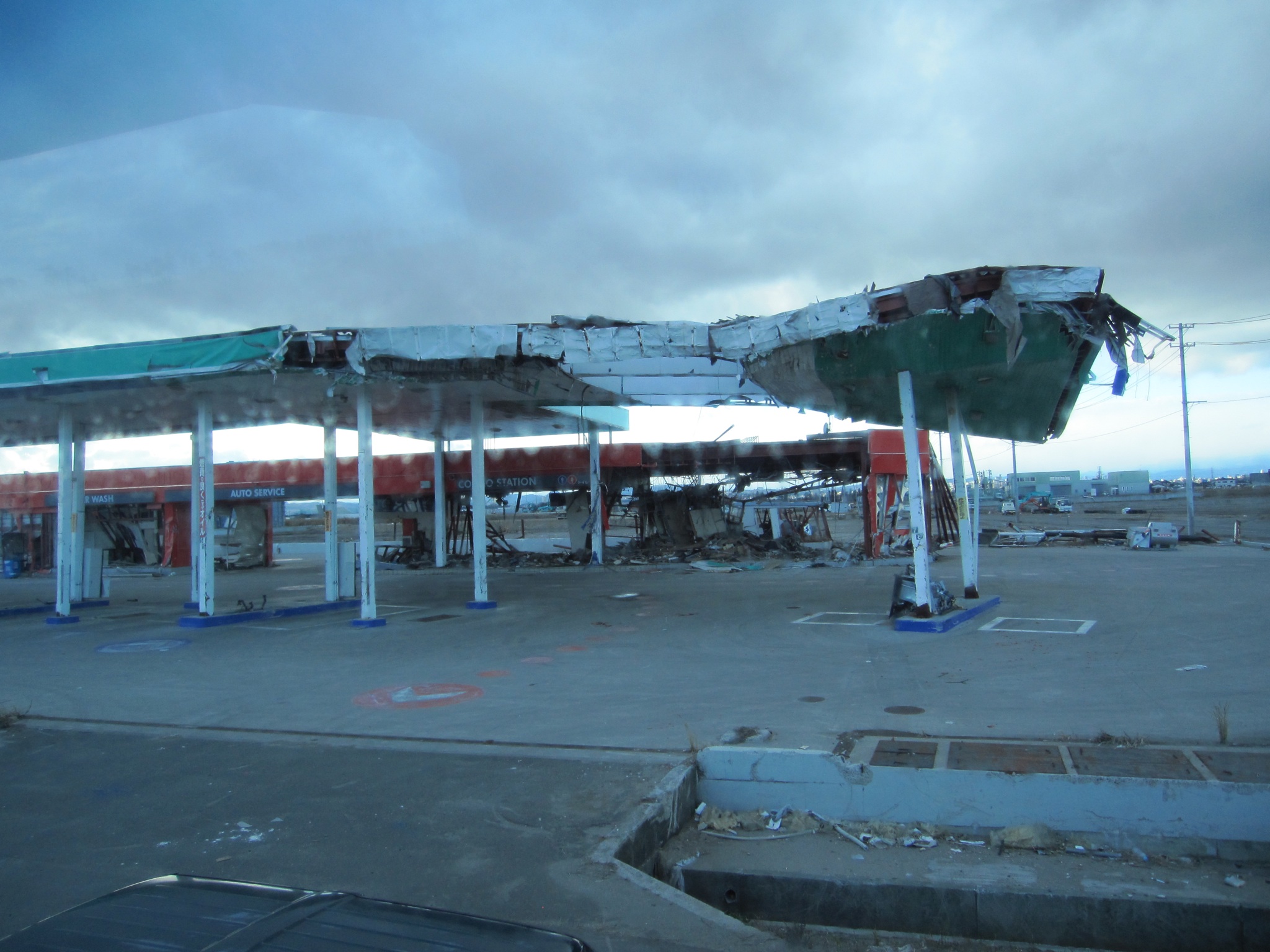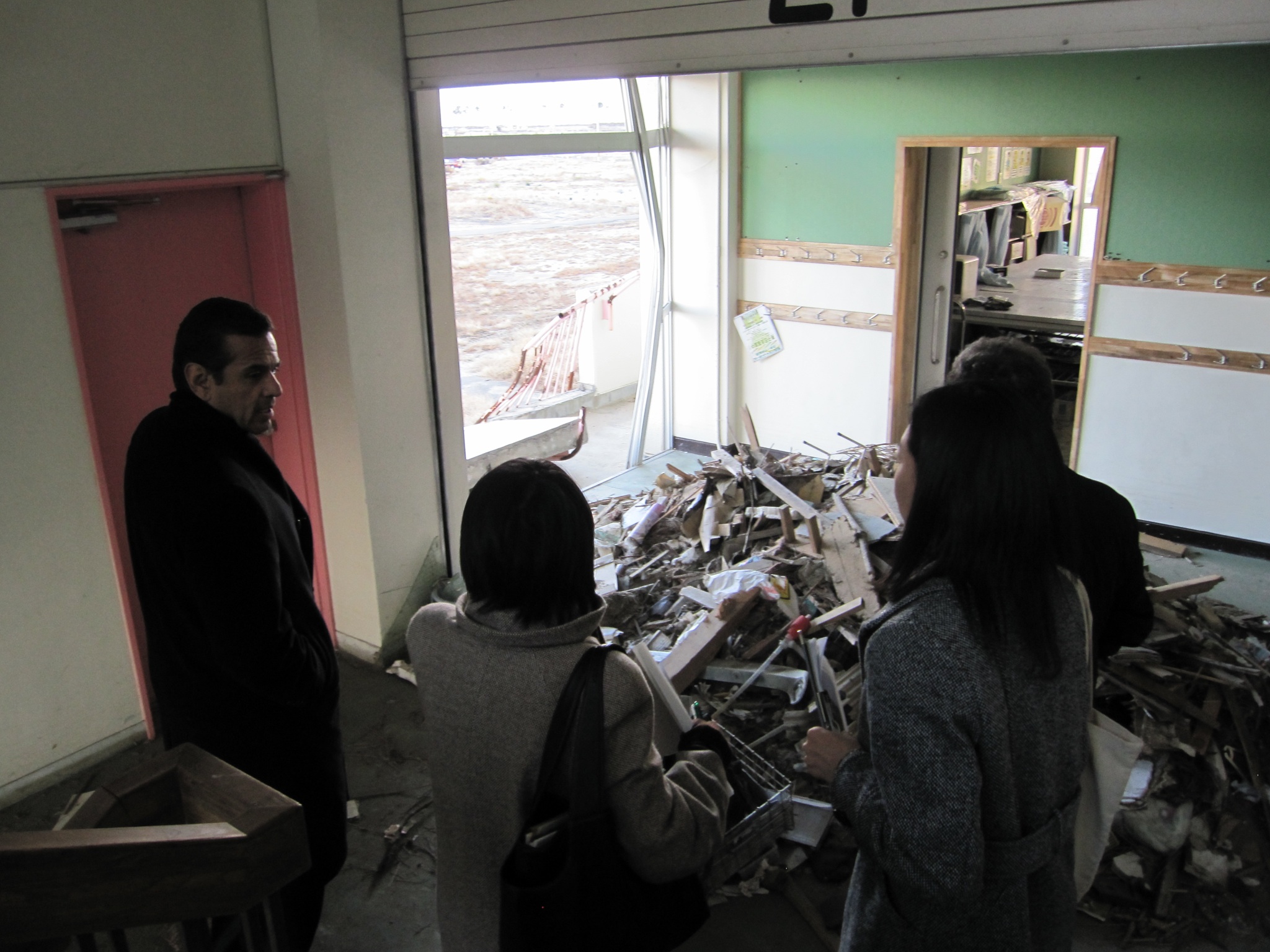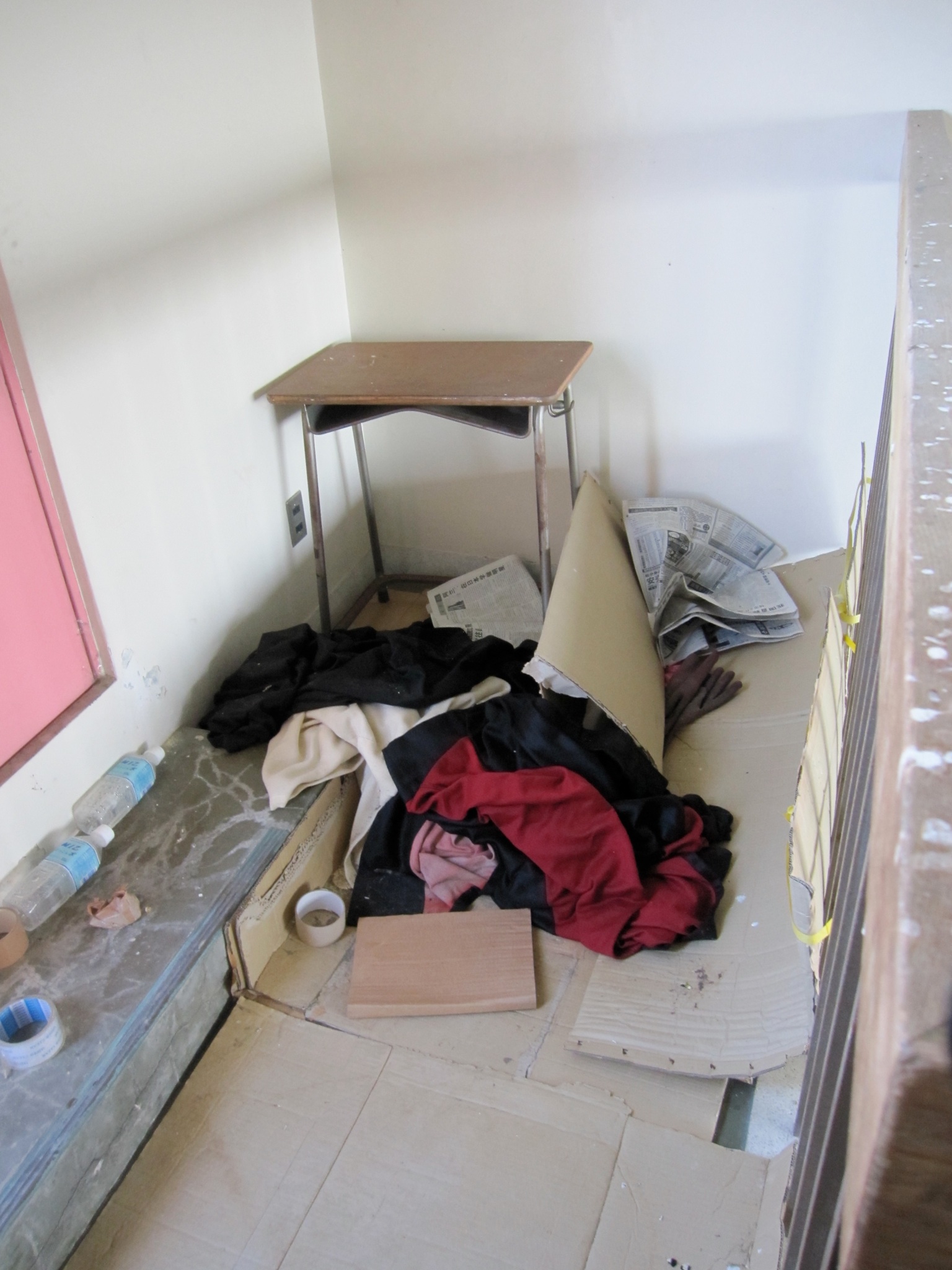
Many state disaster-risk reduction programs have so much to learn from Japan. Within a month, Sendai airport, inundated by the tsunami, reopened. In some areas people went back to work after just two days. If we ever need a reminder of the true value of emergency response professionals -- or truly effective disaster preparedness systems -- Japan is it. -- Eric Ouannes, Director General of Doctors Without Borders, Japan.
On March 11, 2011 the fourth largest recorded earthquake in the world since 1900 took place in Sendai, Japan. By comparison, the Tohoku Earthquake was 300 times stronger and lasted 15 times longer than the 1994 magnitude 6.7 Northridge Earthquake. The earthquakes also generated a deadly tsunami that generated waves as high as 133 ft. Japan's early warning system is believed to have saved businesses, hospitals, and transportation networks hundreds of millions of dollars in damages because they were able to shut down processes 30 to 60 seconds prior to the earthquake. L.A. Mayor Antonio Villaraigosa and a delegation of first responders from throughout Southern California recently returned from a fact finding mission to the earthquake and tsunami torn areas of Northern Japan to learn about that system and other lessons learned that can be applied in California.
Eileen Decker, the deputy mayor for Public Safety, recently shared with me what she learned, the images she will never forget, and the feasibility of similar early warning system for Los Angeles.
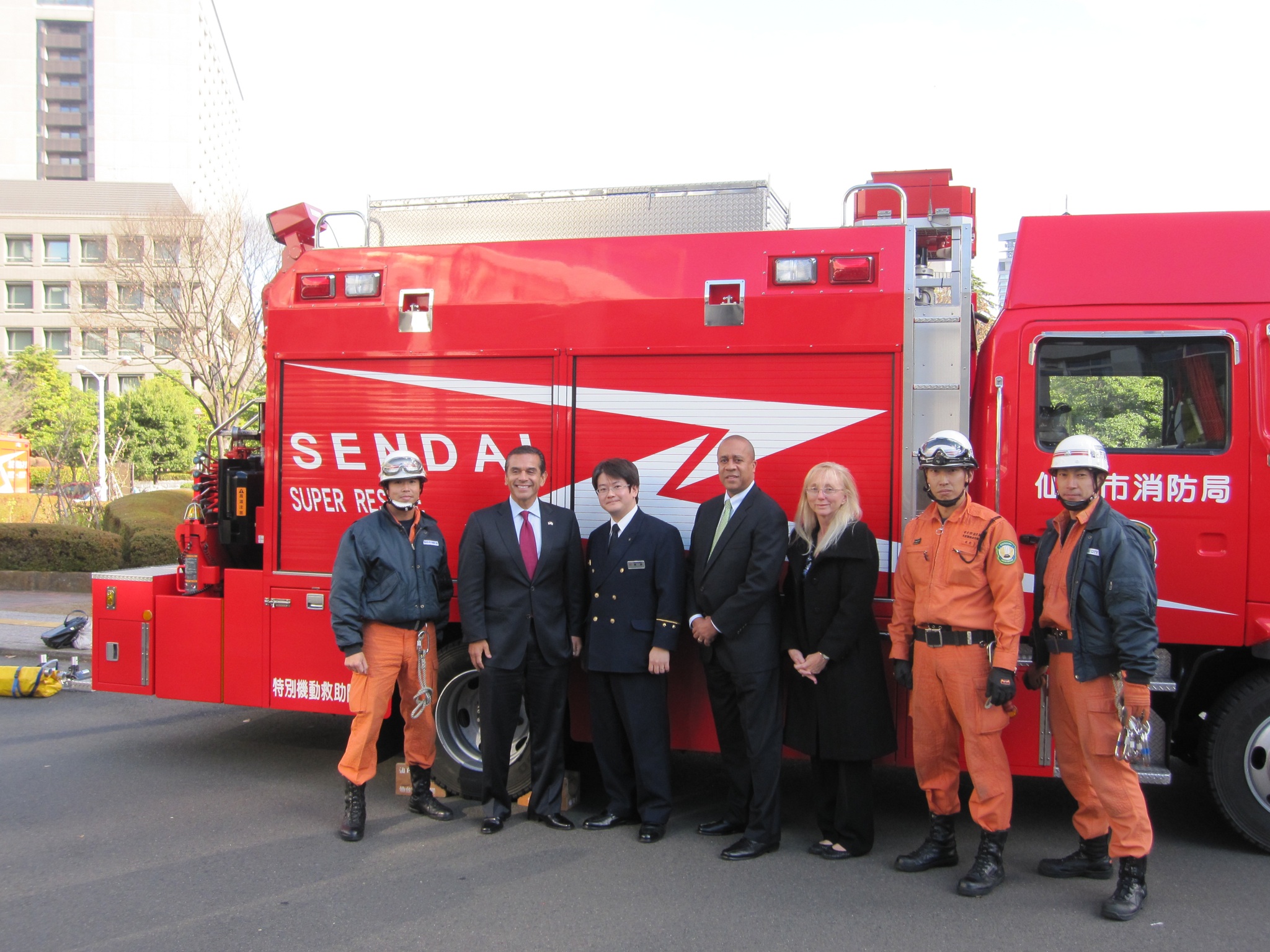
department.
Eileen Decker: What happened to Japan is such an enormous tragedy on so many different levels. In particular, for a country that is so well prepared. We could see it and hear it -- in people's voices -- how everyone takes personal responsibility for their own preparation.
And, seeing what happened to them -- even with all their level of preparation and [how they handled] the confluence of so many tragedies at once. The 9.0 earthquake followed within an hour by a tsunami of proportions they had not anticipated followed by a snowstorm within 24 hours... It was the middle of winter and they had a snowstorm shortly following and then, of course, the nuclear issue. And, dealing with misplaced populations -- people who couldn't find their family members, families torn apart, towns and cities torn apart. What they had to deal with was extraordinary and yet what we also saw was the Japanese people: what an incredible society it is in terms of how they came together and helped each other. Just extraordinary people.
CS: It's known for being a group-oriented culture.
ED: And, clearly, they were united in getting through it and surviving it and moving forward and rebuilding.
CS: Did you meet with any people who could give you sort of firsthand accounts of what it felt like for them and what they did immediately after they ducked and covered? (Hopefully, they ducked and covered.)
ED: Yes, we heard a lot of heart wrenching stories. Children separated from parents. Not knowing. The first responders told me of a story that still hits home about a young woman, a teenager, in fact. Seventeen years old, stranded at her school, she did not know if her parents had survived. And, she waited at the school and was actually the last to be picked up. It was a good story in the end. Her parents did come, but for 48 hours she did not know if anyone in her family survived and if they were coming to pick her up. And just those moments of not knowing, moments -- hours-days, she didn't know. It really struck a chord because we all have children or parents or family members that we can relate that story to.
And, it really hit home when we went to a school, outside of Sendai, near the waterfront. Luckily, it was a four-story school. The children had to be all evacuated to the roof. The school was still standing when we were there in December. It was the only building standing in the area.
It had been constructed to withstand the tsunami that hit. The children had to be evacuated from the roof by helicopter. They were there for a while. They were there during the snowstorm and the blizzard. It had to be freezing for these kids. It was like being in a ghost town, seeing the remnants of what they left behind: They clearly had to sleep in the hallways and [we saw] the boxes that they cut apart to protect themselves and give themselves shelter before they were evacuated.
It really hit home, being in that school and going to the roof of the school to see how they had to be evacuated and how close the water was to the school. Those are moments none of us would want any child to go through.
Being in the presence of that school had a real effect, I think on all of us. It had an effect on the mayor as he walked through the school and you can see they were in the middle of lessons on the chalkboards. Seeing the artwork on the walls. And, seeing at the same time these cut-up boxes that clearly the children were sleeping in and trying to get shelter from the blizzard that hit.
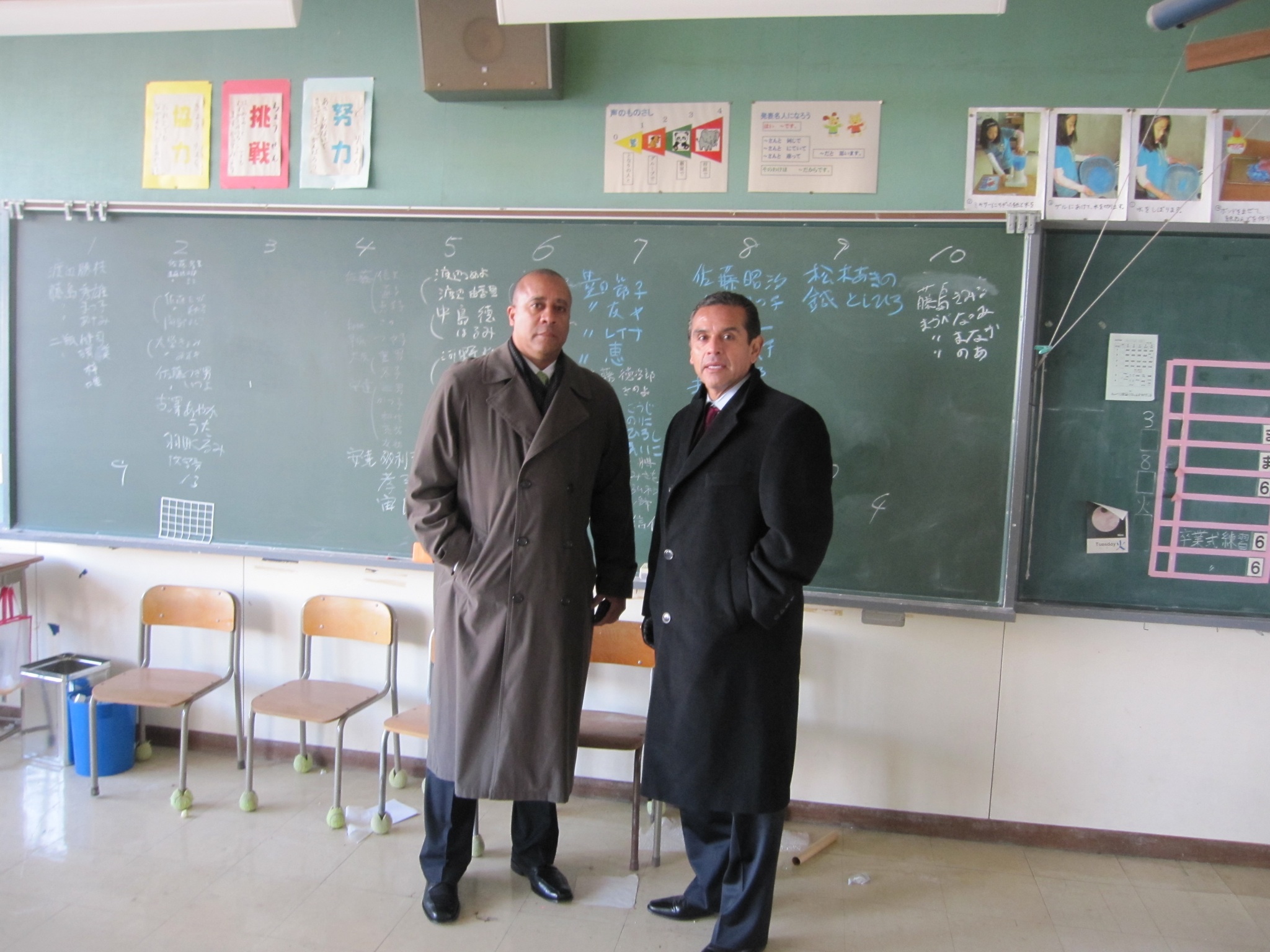
classroom of a school outside Sendai.
CS: How do we duplicate the culture of preparedness that you mention, here in L.A.?
ED: First, I think we have to start with the basics of instilling in everyone a larger sense of self-preparation, and taking some more personal responsibility for that.
Making sure you have water that can last 72 hours. Making sure you have canned goods in your home that don't expire and having flashlights with batteries that work. It's not just a one time thing -- it's an ongoing effort.
The recent windstorm in December probably taught a lot of people. We all thought our lights would go on a lot faster. Luckily, in the City of Los Angeles, we were very fortunate. Most people got return of service within 24-48 hours. But, in the broader county, there were larger issues as we all know.
CS: That's just one utility in some parts of the county.
ED: And it was not of a magnitude that we are likely to face if we have a catastrophic earthquake. So, we all need to be better prepared. because our first responders will be stretched. Our utilities will be stretched. They'll all be working very hard. They're well-trained, dedicated individuals who will put their life on the line for all of us, but we have to help them.
We can't just wait for them to come. We have to have those first aid kits. We have to have first aid training. We must have water to take care of ourselves while they deal with the catastrophe at hand and try to bring us all back to normal operations.
ED: In Japan, they talked rather openly about what they were faced within the first 24-48 hours and how they had to improvise. They were very frank about how they were very prepared for a 9.0 earthquake but not for the tsunami, not for the nuclear incident and not for the blizzard that all happened within 48 hours of the 9.0 earthquake. And, how they didn't plan for the confluence of all those events at the same time. And, in particular, the tsunami and the impact that had and they all have to really think through about the tsunami inundation zones and what reconstruction will happen in those areas, if any.
CS: That's what kind of confuses me though, because the tsunami is the part you really can predict after a quake.
ED: It does not happen with every earthquake and, in fairness, they did prepare for tsunamis...
CS: But their walls were inadequate.
ED: The water, as was explained to me, was at the heights of over 100 ft. So, they could see that they did not plan for a tsunami of that magnitude because of the rarity of it.
CS: What does work in L.A.?
ED: Regionally, our fire departments work very well together. The mutual aid agreements they have between them are strong. The training they have -- the joint training and exercises that they do -- again, very strong. In the L.A. area, fire chiefs work very hard together and make sure that all the departments work well together. Similar training exercises, similar operations manuals...
CS: Are you using the same technology to avoid what we saw in terms of miscommunication between the N.Y. fire and police departments on 9-11?
ED: Inter-operability is a big issue for our region and again, we're working very hard on establishing a true inter-operable program -- not just say between cities and counties, but between fire and police. But a lot of those technological issues have broken down over time but the region has come together in a project called LA-RICS. Los Angeles Regional Inter-operability Communications Systems Program. [We have] the opportunity to be in the forefront of creating true regional inter-operability and a lot of progress has been made in that area. On a smaller scale, cities have created inter-operability amongst police and fire departments. And, frankly, with secondary responders too. Let's not forget, we need Department of Transportation, Department of Public Works, Sanitation, all in line right behind police and fire, as well, to truly recover from an incident . And that is something here in the City of Los Angeles we are very good at coordinating, fortunately.
CS: So what keeps you up at night?
ED: (Laughter) Well, a little bit of everything. I get to work with some of the best departments in the United States -- Los Angeles Police Department, Fire Department, Emergency Management, the federal agencies who are here. But, I get to hear a lot of what our region is facing. As well-trained as we are, as well prepared as we are, we always need to be looking ahead. We can never sit on our laurels because this is a region that is prone to earthquakes, floods, fires. We have to be prepared for everything. We can't do it without the help of people who live here. We all love living in L.A. It's one of the greatest cities in the world. The mayor would say, "THE greatest city in the world." And, he's right. It's such a privilege to live here. But, with that privilege we all have to take some responsibility. And, I worry about people not being prepared, to be honest.
CS: So, let's talk about some concrete preparedness lessons. Because everybody knows that we should be prepared. But, how do you plan to bridge the gap between knowing you should be prepared and being prepared?
ED: When your neighbor's in trouble or you see an ambulance or a fire truck pull up to their house, your first instinct is how can I help? We all want to do that. It is instinctive in all of us. And, you know you are going to feel that way. Remember, when you're sitting at home watching TV of tragedies all around the world, you even have that instinct of: "How can I help?" We want to give. We all look for charity to give to. We're going to want to help our neighbor to be best prepared to do that. Go online now, go get those lists and take care of it now. Don't wait till tomorrow. That has to be the message everybody has to have of you may not have time tomorrow. Something could happen tonight. And, we've all been warned and we all know we're going to want to help each other. That's who we are as a society. We really want to do that. We have to be prepared to do that. That's the only way you can help each other.
Also children are a great way for us to stop procrastinating and be prepared. Our children have to bring earthquake kits to school, they have lessons in school -- we should all be learning from our kids about how they drill, drill, drill in school and they know what to do. We, as adults, have a lot to learn from children and having read through some of these notes of what children said, we all have a lot to learn from children.
CS: This early warning system that they have in Japan, how difficult is it to implement here? Is it a matter of money?
ED: The technology exists. But there are differences. The technology they use there and this is my very simple way of understanding, it is not a perfect match of what we need here because our geology is different. In Japan, they invested hundreds of millions of dollars on this system. For California, I'm told the estimate would be somewhere around 80 million dollars which in these difficult, economic times, is difficult for everyone and yet, it's not insurmountable. Mayor Villaraigosa has said many, many times that this is important for us to have
We think with a good collaborative effort of federal, state, and local authorities, we can put together a good coalition to get this off the ground and get it rolling for here.
CS: How about after a quake? What are the lessons in recovery you will be incorporating into our policies going forward?
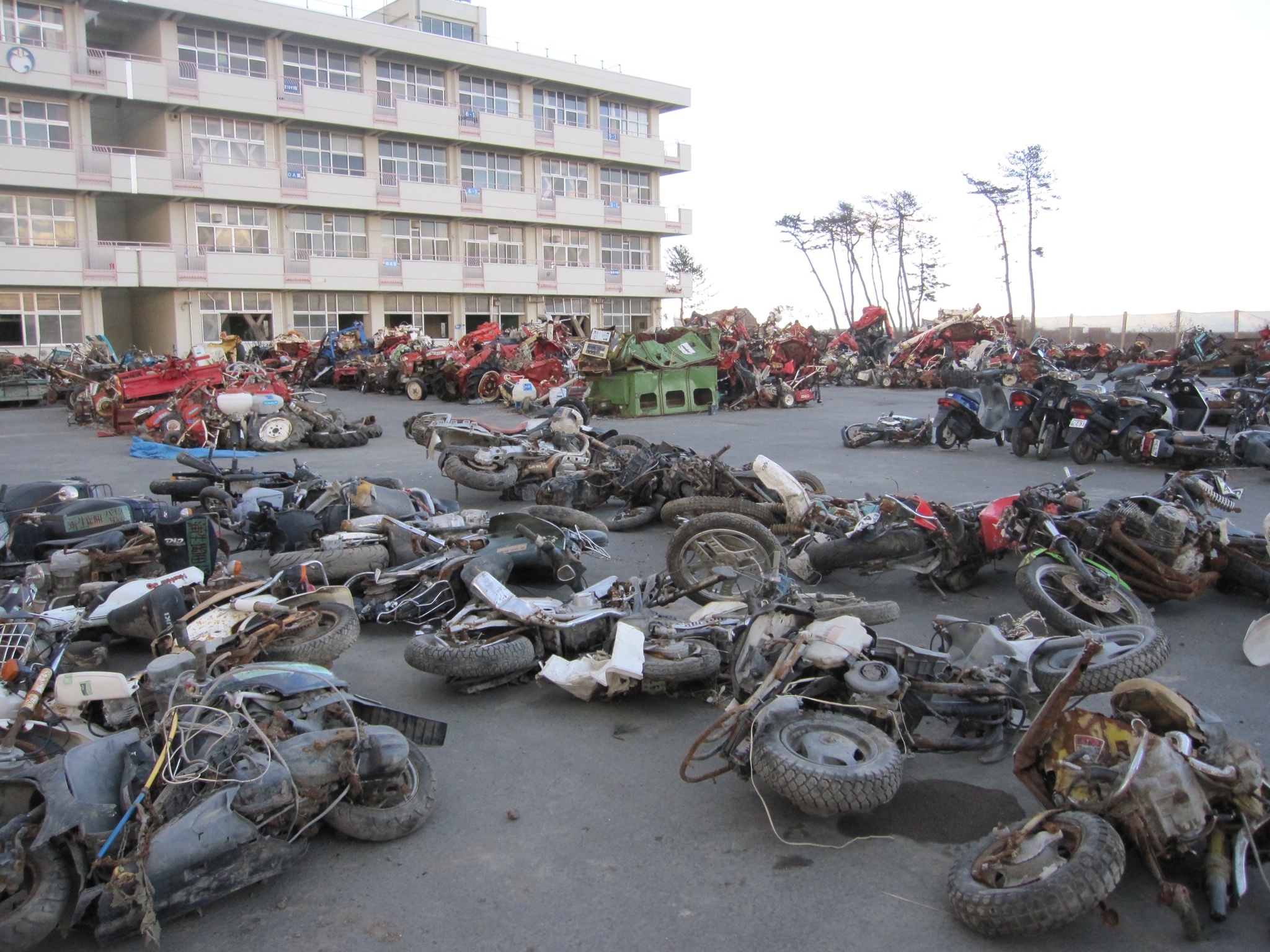
ED: The level of their recovery is tremendous. They still have, obviously, a long way to go with the emotional side of what they faced, what they saw, what they went through and the heart wrenching separations of loved ones but I still walk away with such a positive impression of the Japanese people of what they have accomplished. How they are trying to work towards their future; how to further recover; how to be better prepared the next time. And, that positive attitude of looking forward and lessons learned left such a deep impression with me on what a great culture they have; what a great people they are and frankly, what great partners they are in this overall effort. We really are all in it together and have to help each other.
